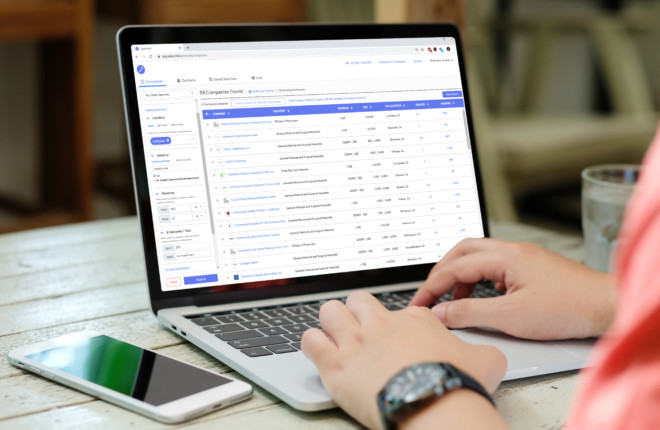Micro-level data is ‘no longer a ‘good-to-have’ thing. It has become a ‘must-have’ for converting new leads and driving customer retention. Traditional segmentation methods like demographics or firmographics often fall short of capturing the full picture of your target audience. To truly connect, you need to understand the technologies that businesses rely on—insights that technographic segmentation provides. Marketers can uncover valuable details that inform more personalized and effective strategies by examining the specific technologies companies use, such as software, devices, and cloud services.
Technographic segmentation offers a deeper look into a company’s technological behaviors, allowing marketers to tailor their messaging and solutions to meet specific needs, driving better engagement and results. As data-driven decision-making becomes crucial, leveraging technographic insights can provide a significant competitive advantage.
This blog will explore what technographic segmentation is, its various types, real-world examples, and practical applications. Whether you’re new to this approach or looking to enhance your strategy, you’ll gain valuable insights to leverage technographics in your B2B marketing efforts.
What is Technographic Segmentation?
Technographic segmentation involves categorizing businesses based on their technology usage, such as the software, tools, platforms, and technology stacks they use. It gives marketers insights into a company’s technological maturity, preferences, and potential pain points, enabling more targeted and relevant outreach. For instance, knowing that a company uses specific CRM software or cloud services can inform your approach, messaging, and product positioning.
Technographic Segments in Marketing
If we have to describe the different technographic segments, they typically include software used, hardware preferences, cloud services, and IT infrastructure. Here’s a technographic segment list:
- Device Ownership and Usage
- Software Usage Segmentation
- Cloud Services Segmentation
- Digital Media Consumption Segmentation
- E-commerce Activity Segmentation
Let’s dive deeper and learn in detail with technographic segmentation example for each type
Device Ownership and Usage
Device Ownership and Usage involves categorizing individuals or companies based on the devices they own, such as smartphones, tablets, laptops, or desktops, and understanding how they use them. For example, some companies might rely heavily on mobile devices for daily operations, while others may prefer desktop solutions. This type of segmentation helps marketers tailor their content and offers to align with device preferences.
A business that uses iOS devices extensively may respond better to app-based solutions that are optimized for iOS, while another that favors Android might look for compatibility with Google services. Understanding these patterns allows marketers to design device-specific strategies, creating more engaging and relevant interactions with their audience.
Software Usage Segmentation
Software Usage Segmentation focuses on the specific software or applications that individuals or companies use, such as customer relationship management (CRM) tools, marketing automation platforms, or accounting software. By knowing which software a company relies on, marketers can position complementary products or suggest more advanced solutions.
For instance, a business currently using a basic CRM system might be a prime target for an advanced CRM platform that offers additional features such as analytics and automation. This segmentation provides opportunities for cross-selling and crafting personalized messages that resonate with the existing tech stack, enhancing the likelihood of conversion.
Cloud Services Segmentation
Cloud Services Segmentation looks at the adoption and use of cloud services like Software as a Service (SaaS), Platform as a Service (PaaS), or Infrastructure as a Service (IaaS). This type of segmentation is particularly valuable for targeting companies that are cloud-forward and eager to invest in digital transformation.
Businesses that utilize cloud services are often seeking scalable, flexible technology solutions that can grow with their needs. By understanding which cloud services a company uses, marketers can tailor their messaging to emphasize benefits like scalability, security, or seamless integration with existing systems, making their offerings more attractive to cloud-savvy companies.
Digital Media Consumption Segmentation
Digital Media Consumption Segmentation categorizes individuals or companies based on their habits around consuming digital content, including social media, video streaming, blogs, podcasts, and online news sources. This segmentation type allows marketers to deliver content in formats and through channels that align with the audience’s consumption habits.
For instance, a business professional who frequently engages with LinkedIn articles may respond better to thought leadership pieces published on LinkedIn, while another who prefers video content might be more effectively reached through YouTube or webinars. By aligning content delivery with preferred media types, businesses can significantly enhance engagement and relevance.
E-commerce Activity Segmentation
E-commerce Activity Segmentation focuses on understanding the online purchasing behaviors of individuals or companies, including the frequency of purchases, preferred e-commerce platforms, and types of products bought. This segmentation is particularly useful for businesses that are heavily involved in e-commerce, as it provides insights into purchasing cycles and patterns.
For example, a company that frequently buys office supplies online might be targeted with offers for bulk purchases or subscription services that streamline procurement. By tailoring marketing strategies to align with the online purchasing habits of their audience, businesses can better meet their customers’ needs and drive more efficient e-commerce transactions.
Each type of technographic segmentation provides valuable insights that enable B2B marketers to refine their strategies, focusing on the specific technological behaviors and needs of their target audience. This approach not only enhances the effectiveness of marketing efforts but also fosters more personalized and meaningful connections with potential customers.
Applications of Technographic Segmentation in B2B Marketing
Refined Lead Scoring:
Incorporate technographic data into lead scoring models to prioritize prospects who fit your ideal customer profile and have a compatible tech stack that aligns with your product.
Enhanced Product Positioning:
Use technographics to understand the competitive market and position your product as a complementary or superior solution to the technologies your prospects are currently using.
Market Sizing and Targeting:
By analyzing the prevalence of certain technologies across industries or geographies, marketers can identify new market opportunities or refine their target market to focus on the most promising segments.
Competitive Analysis:
Technographic data can also be used to monitor competitors’ technology adoption and inform competitive strategy, helping businesses to differentiate their offerings and identify unique selling propositions.
Challenges and Considerations
While technographic segmentation offers valuable insights, there are challenges to consider:
Data Quality and Availability:
Obtaining high-quality technographic data can be a significant hurdle, as not all b2b data providers offer comprehensive and accurate information. Investments in reputable data providers like SalesIntel, known for their robust technology usage data, are essential. However, even with top providers, data can have gaps, inaccuracies, or delays in updates, affecting the reliability of insights. Companies need to vet and validate their data sources regularly to maintain accuracy.
Data Integration:
Merging technographic data into existing CRM systems or marketing automation tools can be technically demanding, primarily if the data formats or structures differ. This integration is necessary to create unified customer profiles that can drive personalized marketing campaigns. Organizations may need to invest in additional integration tools or expertise to ensure that technographic data is seamlessly incorporated into their workflows.
Constantly Evolving Technology:
The technology evolves rapidly, and businesses frequently update or change their tech stacks. This dynamism requires continuous monitoring and data refreshes to keep technographic data current. Without regular updates, marketing and sales strategies risk becoming misaligned with actual customer needs, leading to missed opportunities or misdirected efforts.
Data Privacy and Compliance:
Gathering and using technographic data must comply with data privacy regulations such as GDPR, CCPA, and others that govern data collection and usage. Ensuring compliance can be complex, especially when dealing with global data sources. Companies must establish clear protocols for data handling and ensure that their data providers are also compliant with relevant laws.
Data Overload and Analysis Paralysis:
The sheer volume of technographic data can lead to information overload. It’s crucial to have clear strategies and analytical tools to extract actionable insights from the data. Without proper analytics, teams may struggle to identify the most relevant data points, leading to decision-making delays or focusing on less impactful information.
Resource Allocation and Expertise:
Effective technographic segmentation requires both technical and analytical expertise, as well as dedicated resources to manage data collection, integration, and analysis. Smaller companies or those with limited budgets may find it challenging to allocate sufficient resources, potentially limiting the benefits they can derive from technographic insights.
Alignment Across Teams:
For technographic data to be effective, alignment across sales, marketing, and product teams is crucial. Misalignment can lead to inconsistent messaging or targeting, diluting the impact of campaigns. Ensuring all teams have access to and understand the technographic insights is essential for a cohesive strategy.
Turning Tech Data into Gold: Your Key to Smarter, More Effective B2B Marketing
Technographic segmentation is a powerful tool for B2B marketers looking to deepen their understanding of prospects and enhance their targeting efforts. By focusing on the technologies that businesses use, marketers can craft more relevant and personalized messages, improve lead scoring, and ultimately drive better results from their campaigns. Leveraging technographic insights can turn technology data into a strategic advantage, allowing companies to connect with prospects on a more meaningful level and stand out in the competition.
SalesIntel provides rich technographic data that can be seamlessly integrated into your marketing and sales strategies. By leveraging SalesIntel’s robust data, B2B marketers can gain a deeper understanding of their target accounts, refine their segmentation, and drive more effective engagement. With high-quality technographics from SalesIntel, you can move beyond traditional data points and unlock the full potential of your B2B marketing efforts.




